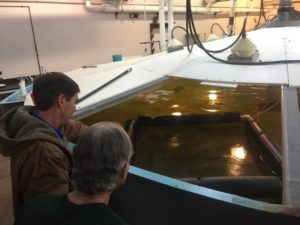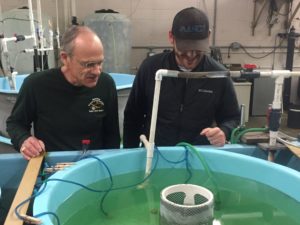Master’s student, Grayson Clark, and Research Associate Brian Ray spent 2 days in Corpus Christi this week, at the TPWD CCA Marine Development Center, setting up an experimental system to test larval flounder live feed enrichments as part of the SRAC grant the Aquacultural Research and Teaching Facility was awarded last fall. See the original story here.
They plan for the system to be stocked with new hatched larval flounder from TPWD Sea Center Texas on January 21. Dr. Ivonne Blandon is working with ARTF personnel to run this first phase of the work in Corpus. Dr. Blandon, who works as Natural Resource Specialist for Texas Parks & Wildlife Department Coastal Hatcheries, is a recent WFSC graduate under Dr. Gelwick. A similar system will be set up at the ARTF and run follow up studies with flounder and other estuarine species (red drum and spotted seatrout).
To see more about what the Aquacultural Research and Teaching Facility entails, head over to the ARTF Facility‘s page. For information on how to Give to the Wildlife and Fisheries Sciences Department to support our research and opportunities, visit our Giving page.





